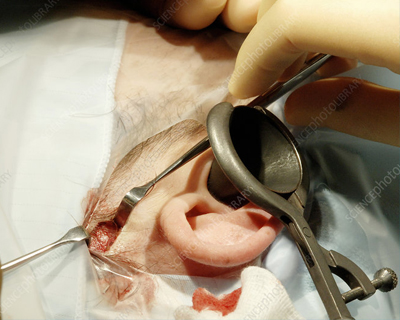
Blog
Everything You Need to Know About Eardrum Repair: A Comprehensive Guide
Overview
Eardrum repair, a surgical marvel addressing holes or tears in the eardrum (tympanic membrane), extends its prowess to the intricate bones nestled behind it. This procedure becomes essential due to factors like recurrent ear infections, trauma, or prior surgeries, all potential perpetrators of eardrum or middle ear bone damage, leading to hearing impairment and an elevated risk of infections.
Types of Eardrum Repair Procedures
1. Myringoplasty: A Quick Fix
If your eardrum damage is minor, a swift solution might involve patching the hole with gel or a paper-like tissue, a brief procedure often executed in the doctor's office under local anesthesia.
2. Tympanoplasty: Tackling Larger Issues
For sizable eardrum perforations or persistent infections, a more intricate tympanoplasty is pursued. This surgery, under general anesthesia, involves meticulous removal of excess tissue followed by grafting a small piece of your own tissue onto the eardrum, either through the ear canal or by making a small incision behind the ear to carry out the procedure.
3. Ossiculoplasty: Rebuilding the Middle Ear
When the tiny bones (ossicles) in the middle ear are damaged, an ossiculoplasty comes into play. This procedure, also under general anesthesia, may employ bones from a donor or prosthetic devices for replacement.
Complications from Eardrum Repairs
While every surgery carries risks, eardrum repair is no exception. Potential complications encompass bleeding, infection at the surgery site, and allergic reactions. Rare but serious issues involve damage to the facial nerve, bones of the middle ear causing hearing loss, dizziness, incomplete healing of the eardrum hole, moderate to severe hearing loss, and the development of cholesteatoma—an abnormal skin growth behind the eardrum.
Preparing for an Eardrum Repair
Inform your doctor about medications, supplements, and allergies. If unwell, surgery might be rescheduled. Follow pre-surgery instructions, including fasting after midnight and taking medications with a small sip of water. Arrival time at the hospital will be communicated by your doctor or nurse.
After an Eardrum Repair Procedure
Post-surgery, your ear will be filled with cotton packing, to be retained for five to seven days. A protective bandage covers your entire ear, and you'll likely be discharged immediately. Ear drops may be prescribed, applied after gently removing the packing. Avoid water exposure, swimming, and blowing your nose. Steer clear of crowded places to minimize infection risks.
Recovery After Surgery
Post-surgery discomfort, including shooting pain, liquid sensation, and unusual sounds in the ear, is normal and typically subsides within days. Overall, eardrum repair outcomes are positive, with over 90 percent success in tympanoplasty cases. However, if middle ear bone repair accompanies eardrum correction, the prognosis may vary.
Conclusion
Eardrum repair, a nuanced surgical intervention, offers hope for those grappling with hearing issues. While risks exist, meticulous preparation and adherence to post-operative instructions significantly contribute to a successful recovery.
FAQs: Unlocking insights
Q1: Is eardrum repair painful? A1: Post-surgery discomfort is common but manageable with prescribed medications.
Q2: Can I resume swimming after an eardrum repair? A2: It's advisable to avoid swimming during recovery to prevent water entry.
Q3: How long does it take to recover from eardrum surgery? A3: Recovery varies, but most patients experience relief within a few days.
Q4: Are there alternatives to surgery for eardrum repair? A4: Surgical intervention is often necessary, but consult your doctor for personalized advice.
Q5: What's the success rate of eardrum repair? A5: Tympanoplasty boasts a success rate exceeding 90 percent, ensuring a positive outlook for patients.